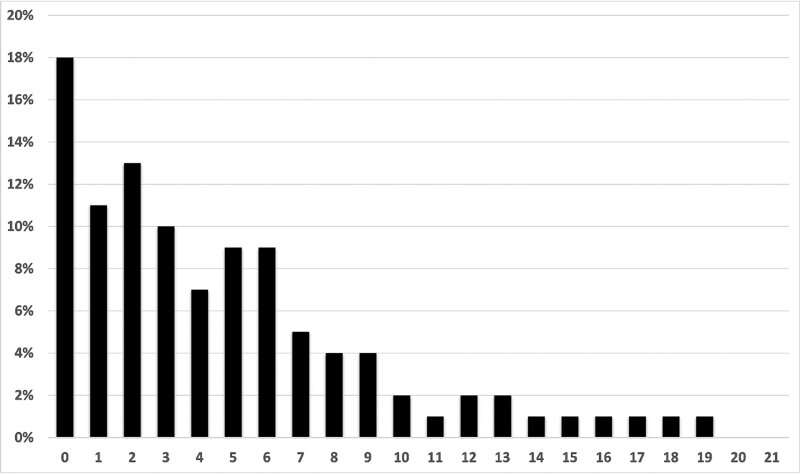Screening tools help dentists and doctors assess and treat vexing symptoms

A recent study from Indiana University School of Dentistry and Regenstrief Institute presents and validates a new brief screening tool to measure patient-reported symptoms of Temporomandibular Disorder (TMD). The TMD-7 is the most recent screening tool co-developed by Regenstrief Institute Research Scientist Kurt Kroenke, M.D.
In addition to the new TMD-7 screener, which will help clinicians manage the often-debilitating symptoms associated with TMD (formerly known as TMJ), Dr. Kroenke has co-developed brief survey measures in worldwide use to track symptoms of depression (PHQ-9); anxiety (GAD-7); suicide risk (P-4); and conditions common in older adults (SymTrak). Some of these tools have been translated into more than 100 languages and assist clinicians in selecting treatments and evaluating their effectiveness.
Pain is the most disabling condition in the world and the most common symptom for which adults visit a primary care physician. Depression is the second most disabling condition in the world and the most frequent mental complaint requiring a doctor's appointment. Screening and diagnosis are crucial to improving outcomes for patients, especially, notes Dr. Kroenke, in light of the COVID-19 pandemic.
"With cancer, heart disease or stroke there are indicators that can be measured. But there are no lab tests or imaging studies for symptoms like pain, depression and anxiety, and those associated with TMD, so the patient is the yardstick—via responses to the screening tool—instead of a blood pressure reading or a blood sugar lab test result," said Dr. Kroenke. "In a weight loss program, a clinician can measure and track a patient's weight loss or gain. The brief, practical scales we develop help a clinician to determine the severity of a symptom and whether it is getting better or worse over time.
"Symptoms are understudied, but if clinicians can measure these symptoms they will be more able and likely to treat them," Dr. Kroenke has observed. "Research dollars predominantly go to diseases with high death rates, but we should recognize that people may live years or decades with symptoms and the conditions that produce the symptoms, and these can be debilitating."
In the new TMD study, the 332 participants—orthodontic clinic patients ages 18 to 64—had one or more puzzling symptoms including headaches, dizziness, earaches not caused by infection, tingling in the fingers, and pain spreading behind the eyes or in the face, shoulder, neck or back.
In collaboration with Regenstrief Institute Research Scientist Shelley Johns, PsyD, and IUPUI Associate Professor of Psychology Catherine Mosher, Ph.D., Dr. Kroenke recently developed a brief item scale (the FSI-3) for cancer fatigue, a symptom affecting many cancer patients and cancer survivors. Given the pervasive fatigue encountered by many COVID survivors, this tool may also assist clinicians treating long-COVID.
Dr. Kroenke is also working with Regenstrief Institute Affiliate Scientist and IU School of Medicine Assistant Professor of Psychiatry Michael Bushey, M.D., Ph.D., to develop a three-item scale to measure treatment outcomes for individuals seeking to recover from opioid use disorder.
The research is published in European Journal of Dentistry.
More information: Emily B. Koufos et al, The TMD-7 as a Brief Measure for Assessing Temporomandibular Disorder, European Journal of Dentistry (2022). DOI: 10.1055/s-0042-1746416





















